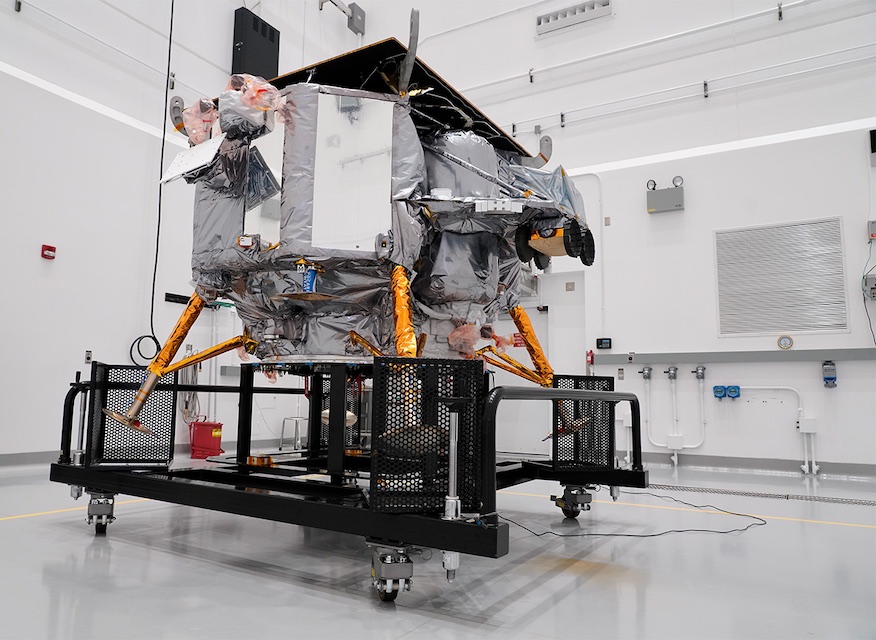
In situation seemly pulled from a science fiction movie, a robotic mission to the Moon swung from the brink of failure to having renewed hope before the pendulum swung back again with a successful lunar landing for Astrobotic’s Peregrine spacecraft now unlikely.
The first commercially-built lunar lander from the U.S. ran into trouble just hours after launching on board United Launch Alliance’s (ULA) inaugural Vulcan rocket.
Soon after Astrobotic’s Peregrine spacecraft was delivered to a trans-lunar injection orbit on Monday morning, the company said an “anomaly” occurred that prevented it from orienting the spacecraft’s solar panels towards the Sun to begin drawing the necessary power to operate.
Astrobotic confirmed it was able to establish connection with the lander a few minutes after it started flying solo via NASA’s Deep Space Network (DSN). But the loss of control meant the craft’s batteries were being drained.
Excellent news!@astrobotic’s confirms Acquisition of Signal of the #Peregrine lunar lander through @CanberraDSN’s antennas #DSS35 and #DSS36 📡📡
Great job team! pic.twitter.com/vgyrbruQYR— CanberraDSN 📡 (@CanberraDSN) January 8, 2024
Heading into a “known period of communication outage, the team developed and executed an improvised maneuver to reorient the solar panels toward the Sun.” And by a stroke of good fortune, the attempt worked.
“We have successfully re-established communications with Peregrine after the known communication blackout. The team’s improvised maneuver was successful in reorienting Peregrine’s solar array towards the Sun,” the company said in a statement. “We are now charging the battery. The Mission Anomaly Board continues to evaluate the data we’re receiving and is assessing the status of what we believe to be the root of the anomaly: a failure within the propulsion system.”
That sense of optimism proved to be short lived however. Less than an hour later, another update from the company stated that the propulsion system failure had led to “a critical loss of propellant.”
“The team is working to try and stabilize this loss, but given the situation, we have prioritized maximizing the science and data we can capture,” Astrobotic said in a statement. “We are currently assessing what alternative mission profiles may be feasible at this time.”
The statement suggests that a Moon landing attempt is more than likely off the table for this lander.
First shot on goal a miss?
One entity eagerly watching to see how things pans out with this robotic lander is NASA. The agency selected Astrobotic as one of the original nine companies that would develop their own privately-funded lunar landers for which NASA would become just one of several customers. The Commercial Lunar Payload Services (CLPS) program has a number of missions lined up in then next several years.
The agency has five payloads onboard the Peregrine lunar lander, most of which were designed to conduct a suite of observations during the planned eight- to ten-day mission on the lunar surface.
“Each success and setback are opportunities to learn and grow,” said Joel Kearns, the deputy associate administrator for Exploration at NASA’s Science Mission Directorate (SMD), in a statement. “We will use this lesson to propel our efforts to advance science, exploration, and commercial development of the Moon.”
After a successful launch this morning, Astrobotic is assessing a propulsion issue with its lunar lander. Check @Astrobotic for updates.
Each mission is an opportunity to learn. We're proud to work with our partners to advance exploration of the Moon. https://t.co/NARUSW6RiA
— NASA (@NASA) January 8, 2024
In the run-up to this launch, many have echoed the sentiment of former associate administrator the SMD, Dr. Thomas Zurbuchen, who described the CLPS program as taking shots on goal and impressing upon the need for multiple trials with high ambitions in the hopes of spurring on robotic lunar exploration.
“The more shots, the more opportunities you get to score,” said Chris Culbert, the CLPS program manager at NASA’s Johnson Space Center on the Thursday before launch. “Today, we don’t know how many of these early tests will be successful, but I can tell you these American companies are technically rigorous, they’re very business savvy, they’re resourceful and driven.”
Astrobotic is already hard at work on its sequel lander, named Griffin, which will carry the highly touted Volatiles Investigating Polar Exploration Rover (VIPER) to the Moon’s South Pole to hunt for ice.

Prior to Peregrine’s launch, Dan Hendrickson, Astrobotic’s vice president of business development, told Spaceflight Now back in October that whatever the outcome of this first mission, they will learn everything they can.
“If there are any issues along the way, we will learn from them and we will proceed. This is a program that is built for the long term. We’re here to stay and we’re excited to follow up with multiple missions in the future,” Hendrickson said. “Every flight is a learning opportunity, success or failure, it doesn’t matter. And we certainly plan to learn from the mission and improve our future missions with all the data and the experience that we gain.”
Next shots coming up
If in fact it turns out that the Peregrine mission isn’t able to be recovered, the next so-called shot on goal is poised to launch in about a month. SpaceX is preparing to launch the first lander for Houston-based Intuitive Machines, which will head to the Moon’s South Pole.
The Nova-C lander also carries a suite of NASA CLPS payloads and it will attempt its lunar landing on Feb. 22 or earlier after launching.

Some of the science that was likely lost on the Peregrine Mission One flight will also get another attempt. During a science briefing on Thursday, Culbert noted that there are duplicates on future lander missions, a redundancy to help take into account the risky nature of these initial commercial lunar ventures.



